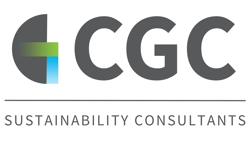Development
Development of 34 dwelling in rural North Devon
Problems
– Demonstrating an highly Sustainable development
– Sited in an highly sensitive and prominent rural location.
– Establish clarity of intention to deliver high quality development
– Demonstrate all sustainability considerations of a truly sustainable development
Services
– Preliminary Energy Calculations (SAP 2012)
– High level initial consideration of design, materials and basic Plan layout
– Demonstration of Local Plan Policy/ National policy Compliance
Results
– Delivered Energy and Sustainability Statement with high levels of detail to demonstrate client commitment to sustainable principles on site.
– Considerations were delivered as a toolbox for future Reserve Matter discussion and agreement.
Project Details
Delivery
December 2015 – ongoing
Client
Mr John Evans
J Blaney and Son
Location
Barnstaple, Devon
Stakeholders
John Blaney
Mr John Evans
North Devon District Council
FURTHER DETAILS
The Renewable Energy Assessment and Sustainability Statement set out the approach for a sustainable development and assesses methods of integrating renewable technologies on the proposed development of 34 residential units (including affordable dwellings) at the land at Belmont Park, Barnstaple. Specifically, the Renewable Energy Assessment and Sustainability Strategy demonstrate the development’s approach to meeting the following obligations:-
– Achieve Building Regulations Part L requirements
– Achieve Part G Potable Water target of less than 125 litres per person per day
– Meet a CO2 emissions reduction renewable energy obligation
– Ensure the development demonstrates a sustainable development.
The Renewable Energy Assessment and Sustainability Statement for the development at Belmont Park demonstrated how it exceeded National Building Regulations, Carbon Dioxide Emissions Targets and the Local Authority requirements for a sustainable development.
Key issues were:-
– Meeting the requirements of the changes to National Building Regulations in particular Part L 2010
– High levels of energy efficiency and a reduction in CO2 emissions through Low and Zero Carbon Technologies.
– The use of water conservation methods such as Sustainable Drainage Techniques (SUDs), Low flow taps and showers, water saving toilets and rainwater harvesting equipment.
– Use of sustainable building materials with low embodied energy, carbon contents and a focus on local sourcing.
– Site waste management and storage of waste to ensure minimal waste to landfill and maximum recycling.
– Focus on sustainable transport and delivery of pedestrian and cycle friendly routes with strong links with the surrounding countryside and local centres.
– Deliver high levels of biodiversity onsite with emphasis on green infrastructure links.
Ready to talk?
If you'd like to talk to us about your project, do get in touch.
